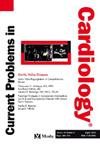一个明显的矛盾在就诊血压变异性和恶性高血压患者的不良后果:西伯明翰恶性高血压登记处。
IF 3.3
3区 医学
Q2 CARDIAC & CARDIOVASCULAR SYSTEMS
引用次数: 0
摘要
背景:恶性期高血压(MHT)是一种严重的高血压,发病率和死亡率都很高;关于每次访问血压(BP)变异性和结果之间关系的数据缺乏。鉴于在一般高血压人群中,如此高的血压变异性与较差的预后相关,我们的目的是研究在这种高危MHT人群中,每次就诊的血压变异性与心血管疾病和死亡率的预后作用。方法:分析来自西伯明翰MHT登记处的数据。我们计算了每次来访血压变异性的四分位数,并使用Kaplan-Meier曲线和Cox比例风险模型来检验血压变异性与结局发生率的关系。结果:共纳入339例患者(年龄48±13岁,男性65%),中位随访11年(IQR 3-18)。在Kaplan-Meier分析中,与低四分位数的患者相比,最高变异性四分位数的受试者心血管疾病、全因死亡率和全因死亡率/透析的风险显著降低(log rank p)。结论:在MHT人群中,较高的就诊-就诊血压变异性与较低的心血管疾病患病率和死亡率相关。鉴于MHT患者的初始血压极高,高血压变异性反映了随访中血压控制可能更好,再次强调了在这一高危人群中早期和快速控制血压的关键作用。本文章由计算机程序翻译,如有差异,请以英文原文为准。
An apparent paradox in visit-to-visit blood pressure variability and adverse outcomes in malignant hypertension patients: The West Birmingham malignant hypertension registry
Background
Malignant phase hypertension (MHT) is a severe form of hypertension with high morbidity and mortality; data on the association of visit-to-visit blood pressure (BP) variability and outcomes are lacking. Given that such high BP variability has been associated with poorer outcomes in the general hypertensive population, our aim was to examine the prognostic role of visit-to-visit BP variability with cardiovascular disease and mortality in this high risk MHT population.
Methods
Data from the West Birmingham MHT Registry were analyzed. We calculated quartiles of visit-to-visit BP variability and used Kaplan-Meier curves and Cox proportional hazard models to examine the association of BP variability with incidence of outcomes.
Results
A total of 339 patients (age 48 ± 13 years, 65 % male) were included, with a median follow-up 11 years (IQR 3-18). On Kaplan-Meier analyses, subjects in the highest variability quartiles had significantly lower risk of cardiovascular disease, all-cause mortality and all-cause mortality/dialysis than patients in the lower quartiles (log rank p < 0.001). In Cox proportional hazard models, higher systolic BP variability was associated with lower incidence of all outcomes [HR (95 % CI): 0.266 (0.128-0.552) for higher vs lower quartile for all-cause mortality]. Higher diastolic BP variability was associated with lower risk of mortality outcomes [HR (95 % CI): 0.236 (0.107-0.519)]. This effect was attenuated in the subgroup with better BP control at follow-up.
Conclusions
Higher visit-to-visit BP variability was associated with lower prevalence of cardiovascular disease and mortality in a MHT population. Given the extremely high initial BP of MHT patients, the high BP variability reflects likely better BP control in the follow up visits, re-emphasizing the crucial role of early and rapid control of BP in this high-risk population.
求助全文
通过发布文献求助,成功后即可免费获取论文全文。
去求助
来源期刊

Current Problems in Cardiology
医学-心血管系统
CiteScore
4.80
自引率
2.40%
发文量
392
审稿时长
6 days
期刊介绍:
Under the editorial leadership of noted cardiologist Dr. Hector O. Ventura, Current Problems in Cardiology provides focused, comprehensive coverage of important clinical topics in cardiology. Each monthly issues, addresses a selected clinical problem or condition, including pathophysiology, invasive and noninvasive diagnosis, drug therapy, surgical management, and rehabilitation; or explores the clinical applications of a diagnostic modality or a particular category of drugs. Critical commentary from the distinguished editorial board accompanies each monograph, providing readers with additional insights. An extensive bibliography in each issue saves hours of library research.
 求助内容:
求助内容: 应助结果提醒方式:
应助结果提醒方式:


